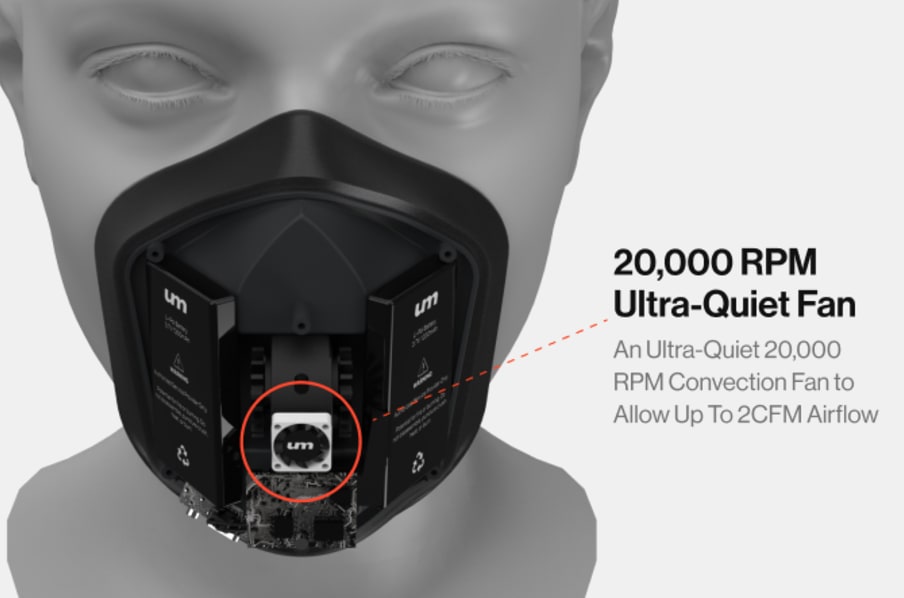UVMask: Complete Protection for the New Normal
EFFECTIVENESS AGAINST COVID-19 AND
OTHER AIRBORNE PATHOGENS
While UV-C light is effective against all forms of pathogens
(microorganisms and viruses), some are more resistant to
inactivation by UV-C photons due to their structure than others.
The effectiveness of UV against most pathogens is determined
experimentally in a controlled environment. Some common
pathogens that UV is effective against are listed below:
• COVID-19 (Coronavirus)
• The common cold (Rhinovirus)
• Influenza
• Chickenpox
• Mumps
• Measles
• Whooping cough (Pertussis)
• Avian influenza A(H7N9) virus
• Denge virus
For more information UV dose requirement for various
pathogens, view [24] in “REFERENCES” section.
The UVMask LED were tested in a controlled environment by
SGS labs to experimentally determine the log-reduction of test
pathogens. The first test was conducted over a span of 3
seconds. The log reduction achieved when testing
Staphylococcus aureus (a small round bacteria) and Escherichia
coli (colloquially known as E. coli) achieved log-reductions in
excess of 4.5 and 5.15 (the limit of testing) respectively.

Table of validation results of UVMask LED for Staphylococcus
aureus and E. coli with a 3 second irradiation time
A later test was conducted to verify the Vortex effectiveness
against the Influenza A virus (H1N1). In this test was observed
the reduction of the virus when only irradiated for a short amount
of time that would be expected with the Vortex. Based on models
that consider airflow through the Vortex and the amount of air
displaced by a single breath, it was simulated that particles will
be irradiated for 0.08 seconds. This number was chosen as the
amount of time that the Influenza A sample would be irradiated.
Note that the sample was irradiated by only a single LED; the
actual design uses two LEDs and will yield double the efficacy.

Table of validation results of UVMask LED for Influenza A with
a 0.08 second irradiation time
Under the brief illumination of a single UV LED, over 95% of the
virus population was inactivated equivalent to a 1.5 logarithmic
reduction. The Influenza A virus has been experimentally shown
to require an average UV dose of 2.3mJ/cm 2 per logarithmic
reduction [23]. The Influenza A virus is very similar to the
contemporary strain of coronavirus.
The 2019 Coronavirus (SARS-Cov-2) requires a relatively
modest UV-C dose of 3.7mJ/cm to achieve a log-reduction of
the population according to existing literature on the latest strain
of the virus. Additional UV-C fluence will result in even higher
inactivation; every magnitude of 3.7mJ/cm will achieve an
additional log-reduction until the finite amount of Coronavirus
particles may be completely eliminated and the air sterilized. A
dose of 16.9mJ/cm was found to achieve complete inhibition of
viral concentrations.







Comments
Post a Comment